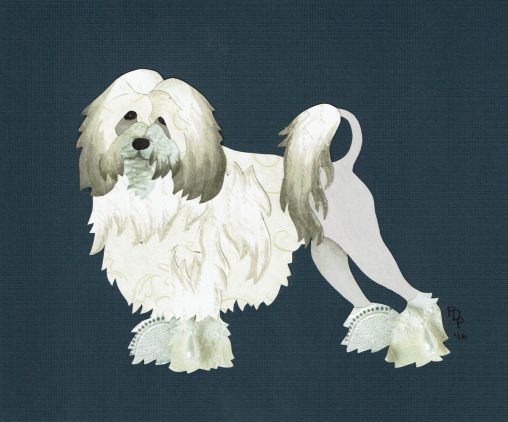
The Löwchen’s signature “lion cut” trim was, in part, a function of projection. As the lion was a symbol of strength and power, shaving these dogs to resemble a male lion became popular with the courts and households of 15th century royals and aristocracy before and after the Renaissance in Europe. As the coat of the Löwchen never stops growing, its possible that the Petit Chien Lion (as it was sometimes known) was trimmed in other fashions, but thus far we’ve not seen evidence of it in art work of the period.
There were two other – and very pragmatic – reasons for the lion cut. The dogs slept with their royal owners, often with only their hind end in the bed and other the covers. The coated front half of the dog served to keep fleas out of the bed. The exposed skin of the Löwchen (pronounced “lerv-chun”) also felt hot to the touch, and thus a Löwchen served to help keep their owners warm while sleeping in the royal bed. By day, ladies would hold their dogs close and wrap their hands in the dog’s lion mane and use it as a hand warmer. Not for nothing did the Löwchen become known as the “hot water bottle of Europe.”
Image: Löwchen created from 10 to 20 individually hand cut pieces of paper in a variety of colors and patterns, combined in layers, then mounted on color stock, by Patricia Peters – CanineCutUp
